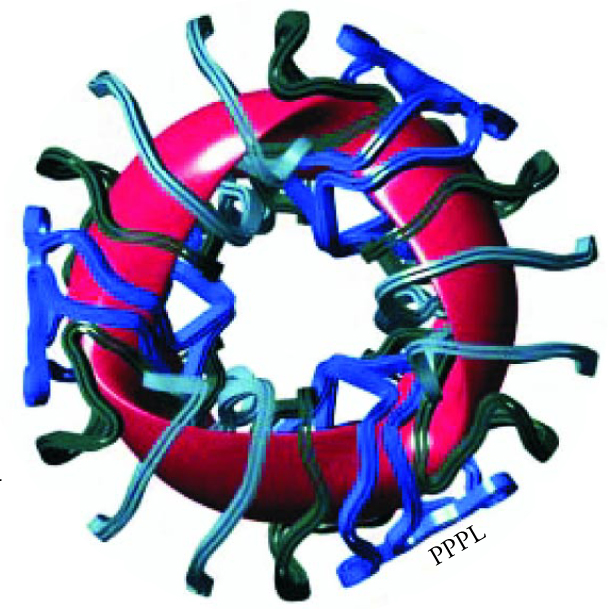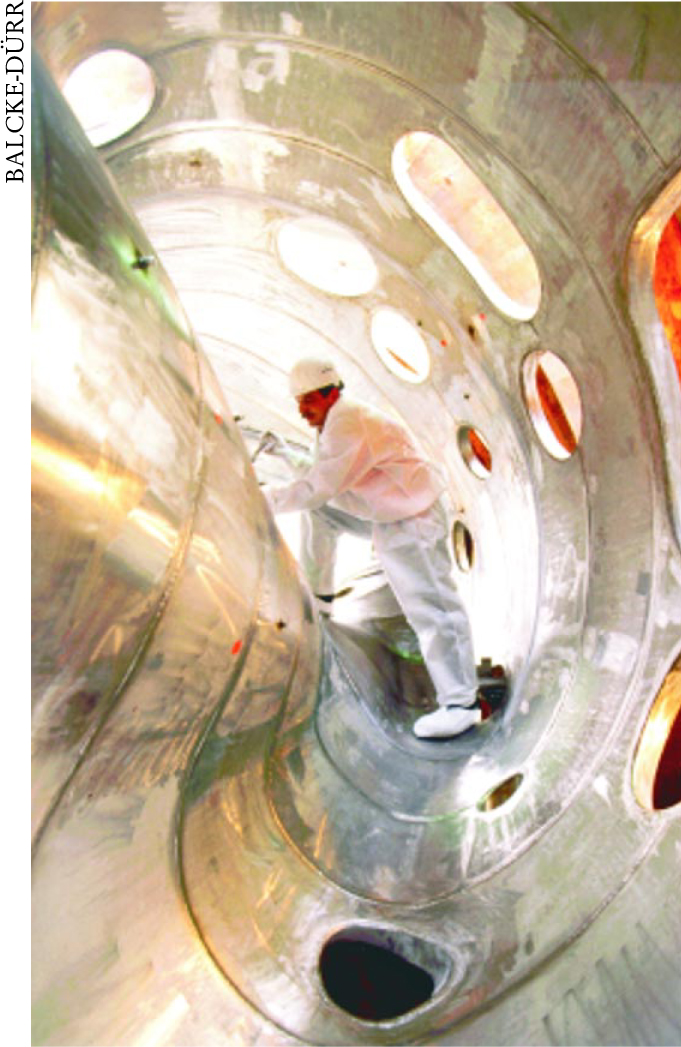Stellarator Fusion Gets a New Look
DOI: 10.1063/1.1496365
If the National Compact Stellarator Experiment planned for the Princeton Plasma Physics Laboratory is successful, stellarators could become prime contenders in the snails’ race to achieve fusion energy. The $70 million NCSX is allotted $12 million out of the Bush budget’s $257 million for fusion research in fiscal year 2003. Assuming the money comes through, construction would begin in 2004, and the stellarator would be due to come online in 2007.
Like tokamaks, their currently more advanced cousins, stellarators use magnetic fields to confine plasma in a torus for fusion reactions. But unlike tokamaks, in which the field varies in only two dimensions, in stellarators the field is fully three-dimensional, with the advantage of sustainability (the plasma doesn’t suddenly collapse, or disrupt) and the disadvantage of poor plasma confinement (the plasma loses particles and energy). New stellarators beat the confinement problem by creating a quasi-symmetric field—trading fiendishly complex magnetic fields for fiendishly complex magnets.
Symmetry solution
In quasi-symmetry, the orbiting plasma particles see the magnetic field as having a constant magnitude in some direction—the long (toroidal) or short (poloidal) way around the torus, or along a helical path, resulting in quasi–axi-, quasi-poloidal, and quasi-helical symmetry, respectively. “[Fusion scientists] have found a way out of the leaky stellarator problem,” says David Anderson, research leader of the two-year-old Helical Stellarator Experiment at the University of Wisconsin-Madison. “HSX is the first of a new generation of stellarators— where we design from the inside out. We target the physics and then design the magnets to achieve it.” Research on plasma confinement at HSX and on stability of current-carrying plasmas at another small stellarator, the Compact Toroidal Hybrid under construction at Auburn University in Alabama, will feed into NCSX’s research.
NCSX will be quasiaxisymmetric, says Michael Zarnstorff, who heads the experiment’s physics group. “We are trying to make it so that the magnitude of the field doesn’t change as you go around the torus. If you do that, the particles don’t know if they are in a tokamak or a stellarator. The lack of symmetry [in traditional stellarators] means that the orbits of the particles in the magnetic field are not necessarily bounded. They can leave the device.”
Hand in hand with quasi-axisymmetry come other tokamak features. The shape can be chubbier—more like a truck tire than a bicycle tube— which lowers the cost for a given plasma volume. And a plasma current creeps in. But where plasma current alone creates the confining poloidal field in a tokamak, in NCSX, the current will contribute about a quarter of that field, with the rest coming from external magnets. According to theoretical calculations, says Zarnstorff, having some current should drive up β—the ratio of the plasma pressure to magnetic field pressure and a measure of plasma confinement—without introducing disruptions. NCSX is designed for a steady β of 4–6%—in line with projected reactor requirements. For comparison, stellarators recently topped β values of 3%, and tokamaks have typically achieved 11%, but only transiently. “The big challenge at the moment is how to sustain sufficient β to make fusion attractive in terms of reactor cost and power output,” says Zarnstorff. And the big advance in stellarators, he adds, is the use of computers to sift through the infinity of possible three-dimensional shapes. “That, and the realization that you don’t have to make the coils helical.”
The bulk of NCSX’s magnetic field will come from 18 contorted coil modules, with another 28 weaker coils for tweaking. The plasma, consisting of hydrogen, deuterium, or perhaps helium isotopes, will have a major radius of 1.4 meters and a periodically varying cross-sectional shape.
Stellarator renaissance
In going ahead with NCSX, the US is rejoining the stellarator fold. First proposed in 1951 by Lyman Spitzer of Princeton University, stellarators were later largely abandoned by the US fusion community in favor of tokamaks. Stellarator research continued elsewhere, however—notably in Japan, where a record-size stellarator has come close to matching tokamak results, and Germany, where the numerical computations used to design HSX and NCSX were developed. Germany’s stellarator in Garching will be shut down on 31 July. A successor, Wendelstein 7-X, is slated to start up in 2007 in Greifswald, in the former East German state of Mecklenburg–West Pomerania. Wendelstein 7-X will have quasi-poloidal symmetry and zero toroidal plasma current.
The international stellarator community must form a consensus as to the most promising stellarator concept for fusion energy, says Friedrich Wagner, director of Wendelstein 7-X. There won’t be the time or the will, he says, to build a stellarator comparable to the International Thermonuclear Experimental Reactor, a hoped-for tokamak intended to show the feasibility of fusion energy. “The decision between the ITER tokamak line and the stellarator line may come in the definition of DEMO [a post-ITER prototype commercial fusion power plant],” Wagner says.
“Sociologically, stellarators and tokamaks represent two separate camps,” adds Zarnstorff. “But not physics-wise—they have the same goals, with slightly different means.” In any case, he says, “it’s way too early to feel competitive.”

The Quasi-axisymmetric magnetic field confining NCSX’s plasma (red in this simulation) will be created using 18 modular coils (blue), plus some other weaker magnets.


The Plasma Vessel will be adapted to match the plasma shape in Wendelstein 7-X, a quasi-poloidally symmetric stellarator under construction in Greifswald, Germany. This prototype is to scale.

More about the Authors
Toni Feder. American Center for Physics, One Physics Ellipse, College Park, Maryland 20740-3842, US . tfeder@aip.org
